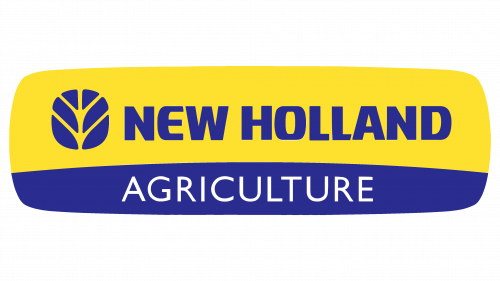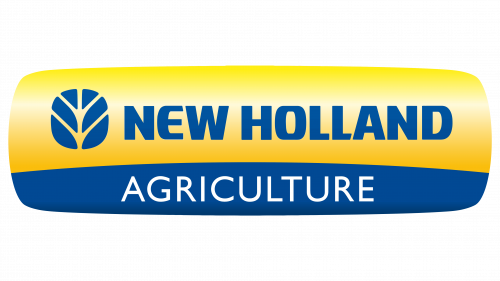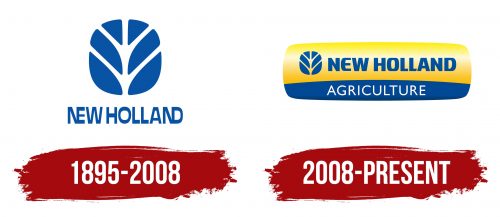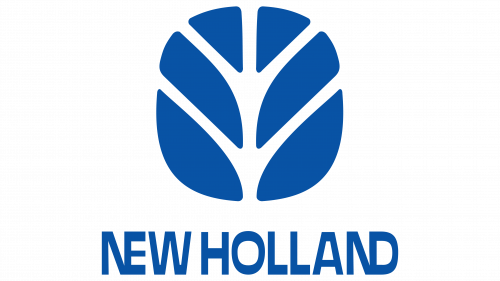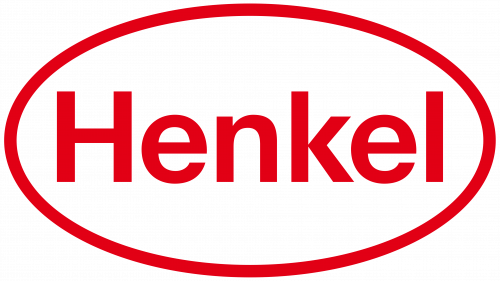The New Holland logo embodies the spirit of innovation that drives agricultural machinery manufacturers to invent high-tech systems such as Opti-Clean, Sensitrak 4WD, SuperSteer, and Opti-Fan. At the same time, the emblem symbolizes the commitment to developing and improving the agricultural sector.
New Holland: Brand overview
The history of New Holland starts in 1895 in the small Pennsylvanian town of New Holland. Abram Zimmerman, an entrepreneurial blacksmith, founded the business by setting up a modest repair shop to maintain the farming equipment of nearby farmers.
Zimmerman started creating his agricultural machinery after quickly realizing that farmers needed more effective equipment. In 1899, he invented the first portable feed mill, which the nearby farmers greatly liked.
The business, formerly known as the New Holland Machine Company, started expanding its product line in the early 1900s. In 1907, it introduced its first stone crusher for building roads. This technology greatly enlarged the company’s customer base outside the agriculture industry.
Growth and innovation continued in the 1910s and 1920s. 1926, the company took an important step toward modernizing agriculture by unveiling its first self-propelled forage harvester.
The firm faced a significant struggle during the 1930s Great Depression, much like numerous other corporations. However, the business overcame this challenging time because of its standing as a trustworthy producer and ongoing innovation.
When the company introduced the first mechanical hay baler in history in 1940, it took a significant step forward in its development. This innovation enhanced the company’s standing as a pioneer in agricultural machinery and transformed the hay harvesting process.
The postwar era presented new development opportunities. Sperry Corporation purchased the business in 1947, providing more funding for growth and development.
The brand’s global footprint significantly expanded during the 1950s and 1960s. The business established production plants in Europe and started exporting its goods globally.
In 1964, Sperry combined the brand with another business, the Belgian combined manufacturer Claeys. This combination greatly increased the product line and improved Sperry’s standing in the European market.
The 1970s brought with it even more technological advances. The first twin-rotor combine in history was introduced, greatly improving harvesting efficiency.
Sperry’s agricultural equipment branch was acquired by Ford Motor Corporation in 1986 and amalgamated with its Ford Tractor Operations, resulting in a significant shift in the corporation’s ownership structure. Ford New Holland was the new name of the business.
More changes occurred throughout the 1990s. FIAT purchased 80% of Ford New Holland’s stock in 1991. After FIAT acquired the remaining 20% of the shares in 1993, the business changed its name to New Holland N.V.
Another noteworthy event happened in 1999 when Case Corporation and the brand combined to establish CNH Global (Case New Holland). After this merger, one of the biggest producers of construction and agricultural equipment worldwide was formed.
Product line expansion and other technology advancements characterized the 2000s and 2010s. The company invested significantly in developing more efficient and ecologically friendly machinery, including alternative fuel-powered tractors.
Despite CNH Global’s 2013 reorganization into CNH Industrial, one of its primary brands, it kept its identity and grew.
The manufacturer unveiled the new CR Revelation series in 2014, which features sophisticated twin-rotor technology.
The business introduced the T7 Heavy Duty line of tractors in 2015 to handle heavy agricultural jobs.
The company introduced the methane-powered New Holland Methane Power tractor concept in 2016.
With an engine capacity of up to 911 horsepower, the business debuted the new FR Forage Cruiser series in 2017, broadening its selection of forage harvesters.
In 2018, the firm’s Precision Land Management (PLM) system improved, adding yield monitoring and automated driving features.
With the introduction of the T8 Genesis series of tractors in 2019, the company introduced the NHDrive automation technology, which allowed for autonomous operation.
The T6 Methane Power, the company’s first methane-powered production tractor, was introduced in 2020.
The CH Crossover Harvesting line of combines, which integrates the rotor and straw walker technology, was unveiled in 2021.
The firm introduced the T7 HD tractor range in 2022, with an improved hydraulic system and an updated Auto Command transmission.
The manufacturer released the next iteration of the PLM Intelligence system in 2023, with better data collection and analysis capabilities. This system will complement its array of precision agricultural equipment.
In addition, the company kept refining its approach to sustainable agriculture by attempting to increase the variety of equipment it offers that runs on alternative fuels like hydrogen and biodiesel.
Meaning and History
What is New Holland?
It is a global brand of agricultural and construction equipment known for its wide range of equipment used in agriculture, construction, and related industries. The brand offers tractors, combine harvesters, balers, hay mowers, sprayers, and construction equipment such as loaders and excavators. The company is part of CNH Industrial, a leading capital equipment manufacturer. It supports farmers and builders with reliable and efficient machinery that increases productivity and efficiency.
1895 – 2008
This logo was created in 1993, replacing numerous word marks and monograms that came before it. Its clarity, strength, and freshness reflected the evolution of the Italian agricultural machinery manufacturer. The emblem’s design is inspired by the Fiatagri brand symbol because, in the 1990s, this brand was connected to New Holland through their shared parent company, Fiat. The designers simply replaced orange with blue to achieve a sense of novelty.
The focus is on a stylized leaf, symbolizing life, growth, renewal, and a love for nature. It is depicted as six blue polygons arranged in pairs and divided by white lines. The design appears harmonious because the left side mirrors the right, like a reflection. Vertical symmetry is associated with stability and reliability, while the streamlined oval shape emphasizes the brand’s innovation and gives the logo a modern appearance.
Beneath the stylized leaf is the name “New Holland” in the same blue color. The inscription consists only of uppercase letters, which makes it look confident, powerful, and solid. It highlights the company’s reliability and the high quality of its products. The wordmark uses a minimalist font, reflecting the machinery manufacturer’s commitment to simple and effective solutions.
The glyphs are formed by straight lines with sharply defined angles at the ends. This geometric style makes the text more noticeable and well-suited to a representative of the engineering field, where precision, meticulousness, and strict adherence to standards are important. However, the font itself is not entirely standard, as the strokes of some letters vary sharply in thickness. Even the oval “O” appears convex, as its sides are too thin compared to the top and bottom.
The logo features very narrow spacing between the glyphs and the words. This reduces the legibility of the inscription, but it also increases the brand’s recognizability. The designers connected both “N” s with the adjacent “E” and “D” to make the emblem more creative. The merged “NE” and “ND” combinations resemble complex structures, an abstract nod to New Holland’s agricultural machinery and innovative engineering solutions.
The deep, dark blue color also symbolizes progress. It is used for all logo elements as a unifying link that integrates the text and image. This color creates a sense of stability and confidence, fostering trust in the company’s products. The rich blue shade is also associated with quality, durability, professionalism, and modernity.
2008 – today
In 2008, New Holland’s branding underwent revolutionary changes that prompted a fresh perspective on the old brand. The logo’s structure became more complex with the addition of new elements. The only constant was the stylized leaf, shaped as six blue polygons. Though the pictogram was reduced and moved to the corner, it remains one of the company’s most important visual symbols.
The manufacturer of tractors, combines, self-propelled sprayers, and other agricultural machinery uses the leaf as a multifaceted symbol with several meanings:
- It represents the company’s connection to the agricultural sector, emphasizing its commitment to natural resources;
- The system of interconnected segments reflects the complex structure of New Holland, integrating various brands, including Fordson, Fiat Trattori, and Claeys;
- The leaf is associated with novelty and freshness, aligning with the international brand’s goal of creating innovative technologies to simplify farming tasks;
- The design resembles a tree with branches and a spreading crown, hinting at the company’s continuous growth, which is deeply rooted in the agricultural machinery market;
- The emblem reflects the rich heritage of the tractor and combine manufacturer, whose history began in the 19th century.
Thus, the leaf symbolizes growth and illustrates the unity of nature and technology, where modern innovations blend with agricultural traditions. Next is the inscription “NEW HOLLAND,” done in a new rectangular geometric font.
This is a bold, grotesque style featuring diagonal cuts at the base of the “L,” a slightly rounded “E,” and a unique “O” that mirrors the shape of the stylized leaf. The capital letters appear heavy due to their wide lines, but this visual weight does not detract from the impression, as it is associated with large and powerful vehicles. The word “AGRICULTURE,” in white at the bottom, has a completely different look. It consists of thin, sans-serif letters and appears elegant due to its smoothly curved lines. This part of the inscription balances the company’s name, preventing the logo from being overly bold.
The text and pictogram are placed inside a horizontal rectangle with rounded corners. The base is divided into two parts: a golden top and a blue bottom. They differ in color and texture, as the upper half of the emblem is decorated with a linear gradient. A light stripe transitions into yellow and orange, creating a sense of depth. The image appears shiny and convex, combined with the gold color, which characterizes New Holland as a progressive manufacturer of high-tech agricultural machinery.